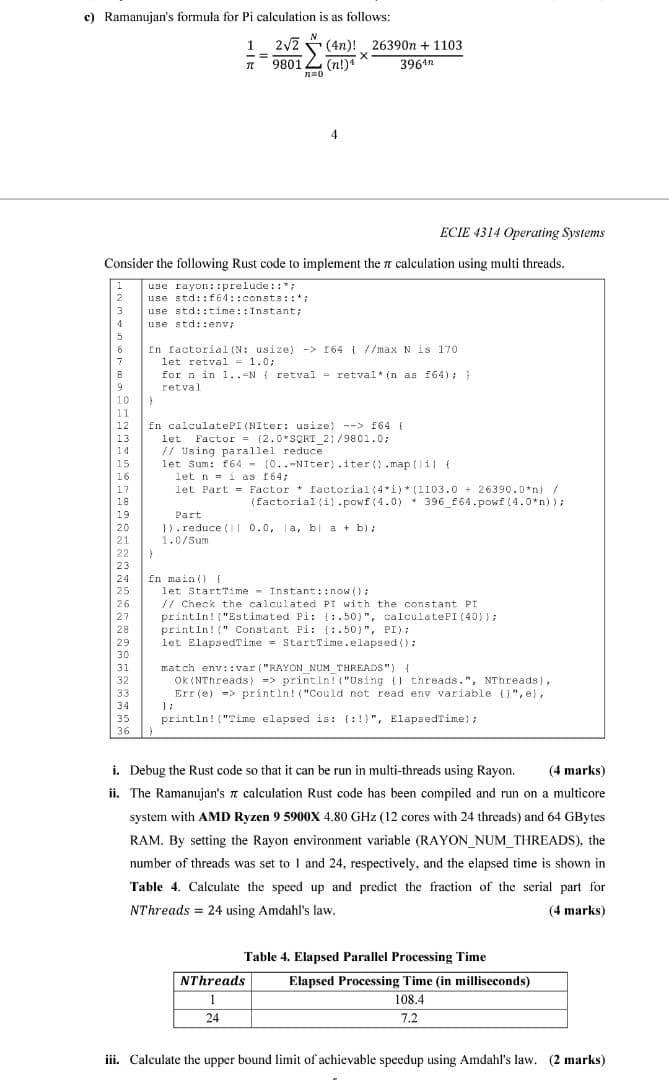Answered step by step
Verified Expert Solution
Question
1 Approved Answer
c) Ramanujan's formula for Pi calculation is as follows: 12V2 (4n)! 26390n + 1103 39611 2013 9 X N30 4 ECIE 1314 Operating Systems Consider

Step by Step Solution
There are 3 Steps involved in it
Step: 1

Get Instant Access to Expert-Tailored Solutions
See step-by-step solutions with expert insights and AI powered tools for academic success
Step: 2

Step: 3

Ace Your Homework with AI
Get the answers you need in no time with our AI-driven, step-by-step assistance
Get Started


